Temporary Exhibition
SHIPWRECK
25 March – 3 September 2006
_____________________________________________________________________________
The Yarmouth Roads Wreck Site
This historic wreck was first discovered off Yarmouth in 1983. She was found during an
archaeological survey, searching for the source of Roman pottery brought to the
surface by the nets of oyster fishermen.
archaeological survey, searching for the source of Roman pottery brought to the
surface by the nets of oyster fishermen.
During the first investigations only a few centimetres of timber were found protruding from
the seabed. However, when archaeologists found three pewter plates associated with the
wreckage, they were able to date the site to the 16th century. It was soon realised that
this was an important discovery and was designated as a ‘Protected Wreck Site’.
the seabed. However, when archaeologists found three pewter plates associated with the
wreckage, they were able to date the site to the 16th century. It was soon realised that
this was an important discovery and was designated as a ‘Protected Wreck Site’.
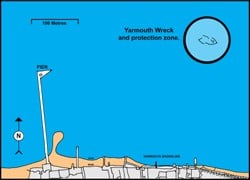 Location of the Yarmouth Roads wreck site. 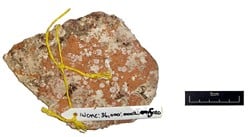 Roman pottery from the seabed. | | Archaeologists of the Isle of Wight Maritime Heritage Project carried out the underwater investigation between 1984 and 1989. Their work began to reveal more about the structure and the finds associated with the wreck. Excavations established that the ship was once a thirty metre long merchant carrack, and possibly of Spanish origin. The excavation soon revealed an impressive array of artifacts, which began to point to a Mediterranean origin for the wreck. Finds recovered from the site include a bone comb and a bronze pestle. A late 16th-century bronze gun was found relatively close to the site and is possibly associated with the wreck. This is on display in the Sunken History Exhibition at Fort Victoria, near Yarmouth. |
| Exactly how much of the ship remains buried within the sediment is unknown. Underwater trenches revealed that substantial timbers still survive, especially around the stern. However, towards the centre of the site the hard clay seabed has meant that less of the ship survives. Archaeological investigation of the wreck ended in 1989. | | 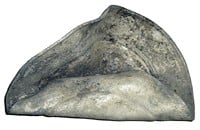 Pewter plate, folded over into centre. |
| The site is still monitored to check that the seabed sediments covering the wreck remain stable. During 2004, the Hampshire & Wight Trust for Maritime Archaeology (HWTMA) became the Licensee for the Yarmouth Roads Site. Their dives to the wreck have shown that there are still some timbers visible on the seabed. | | 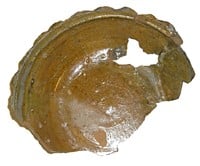 Ceramic bowl, fired clay. |
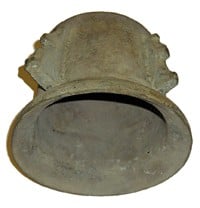 Cast bronze mortar, with unusual handles around side. | Above the surface the project researched into the possible identity of the wreck. Many hours were spent visiting archives and studying documents, in search of written records of a 16th century ship being lost off Yarmouth. Eventually, a reference to a Spanish ship was found in the High Court of Admiralty Records. In 1567 the ‘Santa Lucia’, a Spanish carrack, was sailing to Flanders with a cargo of wool. The ship ‘by fortune perished and was lost in the seas thwart of Yarmouthe in the Isle of Wight’. Reports stated that the cargo had been salvaged. However, an impressive variety of artifacts were excavated from the site. Is this the Yarmouth Roads Wreck? |
_____________________________________________________________________________
Page last updated on: 28/07/2011





